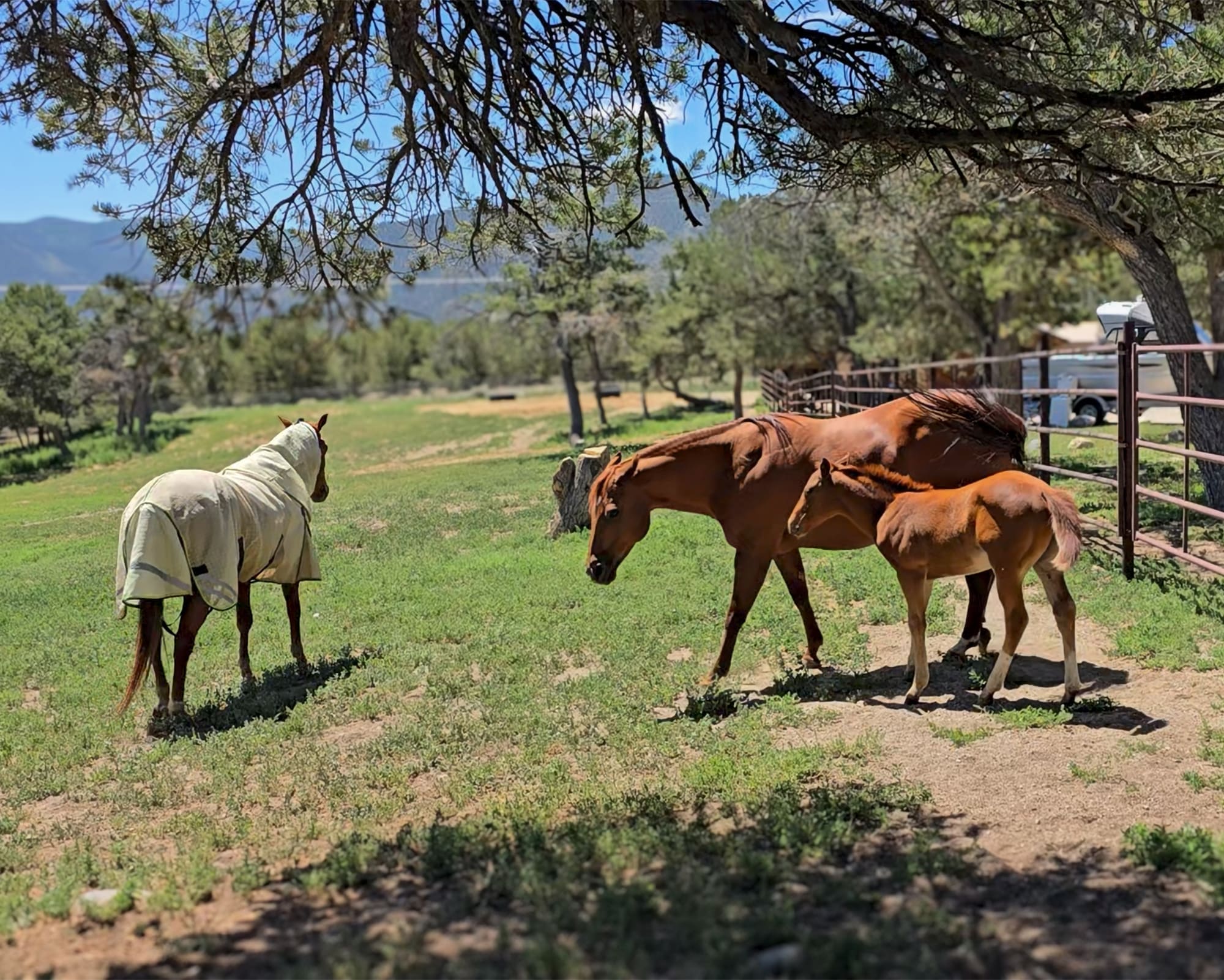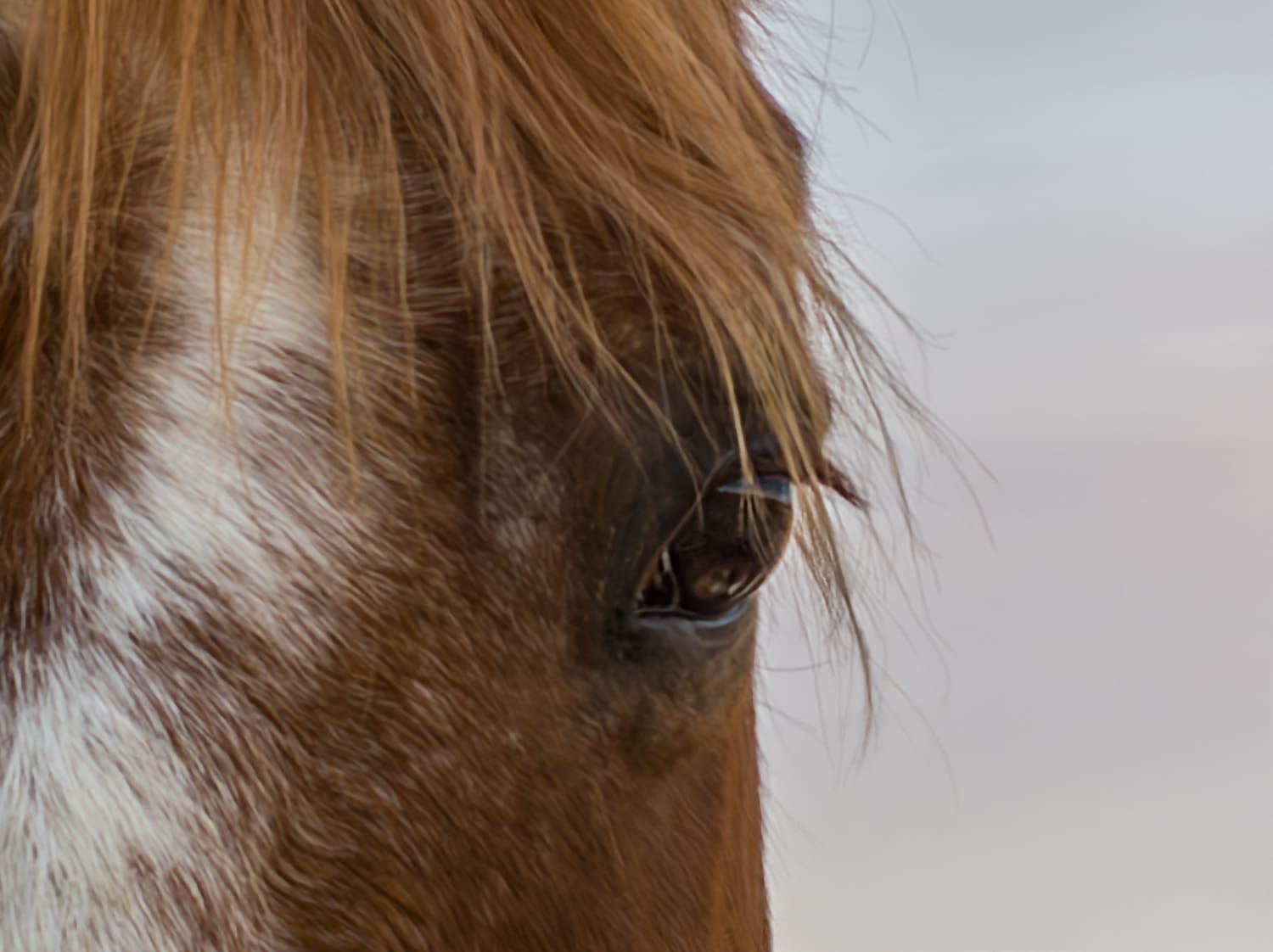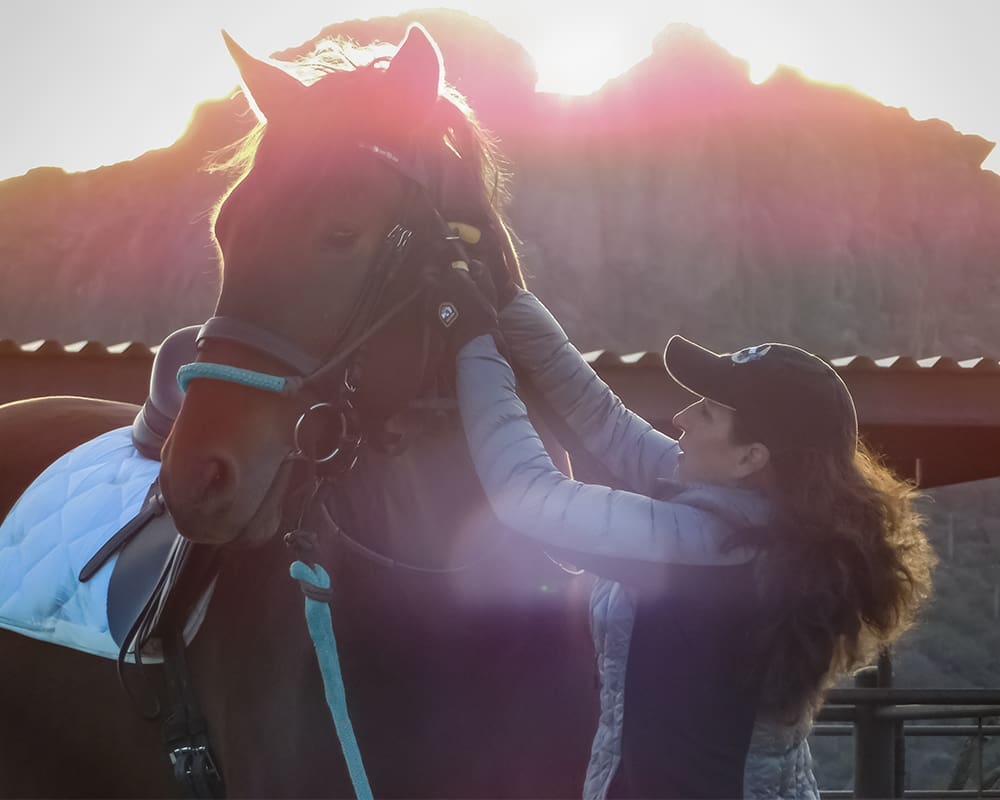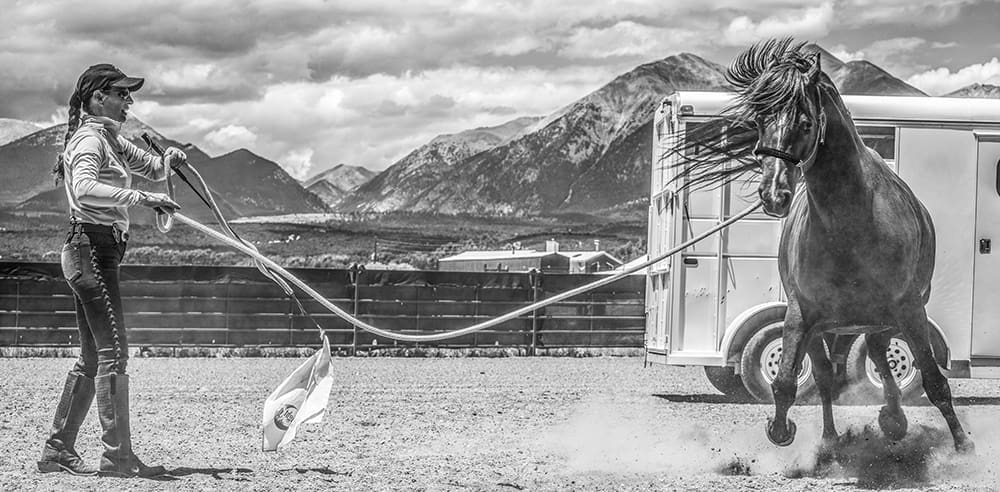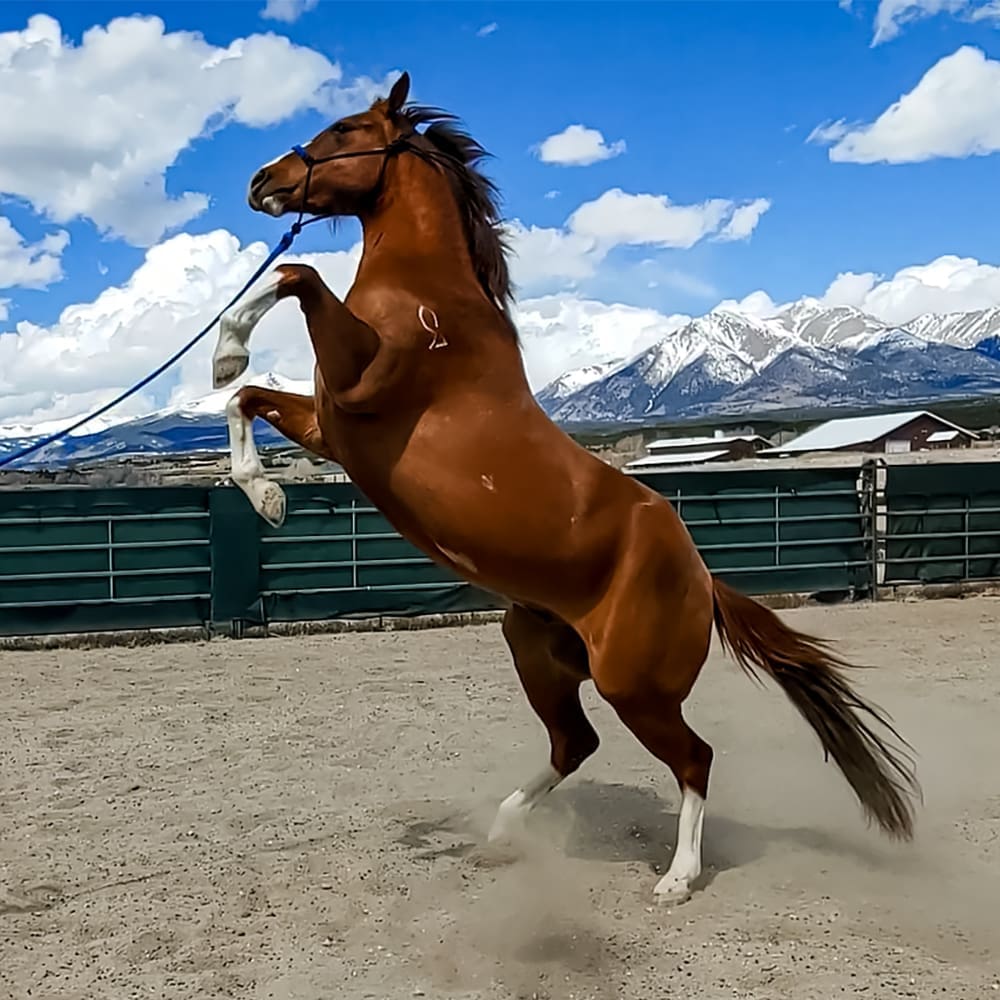
No doubt about it—horses are emotional animals; perhaps more emotional than humans. As prey and herd animals, horses are programmed to adopt the emotions of the animals around them (herd mentality) and react appropriately. It is a life and death matter to a prey animal.
When one horse in the herd becomes frightened, generally all the horses will respond in kind. This tendency of horses to adopt the emotions of others applies to the humans around them as well, emphasizing the importance of controlling our own reactions when working with a horse that’s on emotional overload.
Horses have the same basic emotions as humans—happy, sad, scared, angry, frustrated, lonely, jealous, disgusted. Although we cannot always know exactly what emotion the horse is feeling, it is easy to recognize a horse that’s having an emotional meltdown. Whether the horse is panicked, throwing a tantrum over something he does not want to do, or simply overwhelmed and shutting down, this behavior is often dramatic and can be frightening at times.
In a perfect world, a horse is always calm, focused, and steady in its behavior, but in the event your world is not perfect and your horse is not a robot, it is good to be prepared to handle emotional overload in horses. Here, I will share some tips for recognizing and analyzing changes in your horse’s emotionality as well as my philosophy for managing it. Most importantly, I’ll discuss the technical skills you need to employ when your horse’s behavior tanks, you feel out of control, and need to get your horse back to a thinking state of mind.
Not My Horse… He Never Acts This Way at Home!
Any horse may fall victim to emotionality, no matter the age, breed, temperament, or how well trained it is; this is simply the nature of horses. The causes may vary from a simple startle response that triggers flight (rabbit jumps out from a bush), to over-stimulation in a frenetic environment (like a parade; the “first trip to town” scenario), to separation anxiety (herd-bound), or slowly building anxiety that suddenly overflows (often caused by underlying pain issues), to tantrums and refusals (perhaps a result of poor handling, underlying pain, or fear), to a horse that’s being asked something it’s not capable of in the moment and mentally shuts down (“over-facing” the horse).
A horse experiencing an emotional meltdown will likely have its head high, its tail up or stiff or swishing; a distressed expression in its eyes and on its face; tense and perhaps shaking through its whole body (“on the muscle”); calling out, shaking its head, stomping and fidgeting; rearing; searching right, then left, then right (looking for an exit), perhaps attempting to spin and bolt away. At times, a horse that is overwhelmed will simply shut down, become heavy, lethargic, and non-responsive (behavior often referred to as “sulling up”).
Whatever the cause, when a horse is emotionally overwhelmed, it is not in a thinking or trainable state of mind. Without relaxing first, the horse cannot think well, and unless and until it returns to a thinking state of mind, no training can occur. Relaxing and regaining control of the horse, then bringing him back to focus, are the immediate goals. As a rider or as a horse handler, your job will be much easier when you learn to recognize small changes in your horse’s emotionality and take proactive steps right away, to bring him back from the brink.
Calm + Thinking = Trainable
A compliant, attentive, and willing horse has a relaxed posture, with its head and tail low, and its ears relaxed in an east-west position, either focused on the rider/handler or focused on nothing. When the rider gets active from the saddle, both ears focus back, looking for a cue. When asked something from the ground the horse is focused on the handler, calmly looking for clues as to what it should do. A contented horse lowers its head and sighs deeply, often bending a hind leg to rest (much different than cocking the leg tensely, as with a kick threat).
Inevitably, things will happen that lead to excessive emotionality in your horse. Paying close attention to the horse’s posture, its breathing, the tension in its muscles (fight or flight posturing). Accurately reading the horse’s communicative gestures (like tossing its nose, shaking its head, switching the tail, pawing, stomping, cocking a hind foot defensively) will help you understand the origins of the horse’s emotions.
Analyzing the situation to determine the motivation behind the horse’s behavior, is important and will help determine the best response. Is it pure fear, a startle response, separation anxiety, or a total mutiny? Is the horse trying to get away from something or pull toward the barn? Does the horse’s reaction point to pain as a root cause, or is it a tantrum from a horse spoiled by poor handling?
An emotionally overwrought horse may be fearful, angry, defiant, refusing, searching, or despondent, triggering behaviors like flight or fight responses. One thing we know about horses is that once they enter a cycle of behavior like flight, the behavior tends to escalate—until something happens to stop it. The sooner intervention occurs, the easier it is to get the horse back to a relaxed and compliant state. The longer the horse stays in the cycle of behavior, the harder it is to get them out.
Becoming aware of changes in the horse’s emotional state when it first happens, analyzing the situational causes, then taking immediate action to bring the horse back from the brink of an emotional meltdown, are the keys to success in handling a horse with extreme emotionality.
Training Philosophies That May Help
Over the decades of training horses, I’ve learned to treat an excessive emotionality in horses as a mental health problem, not a training problem. Before anything productive can happen with that horse, I must get the horse back to a productive mindset (calm, relaxed, and thinking). Whether I am loading an uncooperative horse into a trailer or trying to cross a sticky water hazard, if the horse is having a meltdown, my job is to diffuse and de-escalate the behavior first, by asking the horse to lower its head (relaxing its physical posture), take a deep breath, sometimes stroking the horse in reassurance, sometimes gently scolding the horse for infractions.
When I am dealing with emotional outbursts in horses, it is critical that I control my own emotions, staying in the moment and taking deliberate and methodical actions. I have learned to breathe deeply, to slow down my own reactions and cues, to exhale as I relax my own body posture. I must stay in a thinking state of mind myself, take control of the situation, and be proactive. The worst things I can do are to shut down, doubt myself, show contradictory body language, and become passive.
When a horse’s behavior goes south on me, I need to find some familiar ground with the horse, to get him back to a responsive frame of mind. I will issue simple directives to the horse and give basic cues I know the horse knows, like turn right, turn left, stop and go. I will praise and reward the horse’s response to these simple cues, reminding the horse that it knows how to respond and how good it feels to be praised. I will regain the horse’s responsiveness the easiest way I can.
As flight animals, horses are hard wired, mentally, physically, and behaviorally for motion. Horses think better when they are moving. Forward motion helps the rider or handler regain control. Without free and willing forward motion, a horse cannot be trained. However, sometimes movement in the wrong direction triggers the flight response, so I must be prepared to shut down flight instantaneously.
Addressing the horse that is emotionally overwhelmed sometimes means I treat it as a mental health issue and that I must slow down my reactions and control my own emotions. I want to engage the horse in simple cues and responses, so he starts thinking again. Often it is best to keep a distraught horse moving, because a horse that is moving forward may be more easily controlled, yet I must be prepared to shut flight if things get out of control.
Technical Skills to Employ
Abdominal breathing, keeping your eyes focused, and adopting calm and confident body language are critical skills for the rider or handler. Horses are mimicking animals that communicate primarily with postures and gestures. Having command of your own presence and being able to call up these skills on demand, will get you far with horses.
Learning the hard skills of managing the reins, controlling the nose of the horse, lateral flexion, using the one-rein stop, and how to employ the emergency stop (which is not the same as the one-rein stop); or, from the ground, to use your rope and flag productively, to be aware of spatial issues and positioning, to disengage the hindquarters to stop—these are the skills that allow you to shut down flight or control the horse that moves into you or wants to wheel around and bolt.
Bending the horse’s neck will help you gain control of a horse that is volatile or threatening aggression or mutiny. Whenever I have concerns about controlling a horse—either from the ground or from the saddle, I will require it to keep a slight bend in its neck as I ride or lead. If the horse’s neck is straight out in front of him, it is much easier for the horse to over-power me. But riders must beware of too much pressure on the outside rein when bending, which may have the opposite result and cause the horse to run through the bridle.
De-escalate an emotional response and reestablish control by engaging the horse in a simple activity he knows how to do. Whatever you can do to cue the horse and get a response will engage its mind, start the horse thinking, and allow you to praise it. Think about cues to go, stop, turn.
Resort to groundwork basics like circling work, changes of directions, and disengaging the hindquarters— if you are riding, do not be afraid to get off to school your horse from the ground to get his focus back on you. It is important to have these groundwork exercises in your bag of tools to fall back on. Your authority and your horse’s confidence may be gained easier from the ground.
Elaborating on these hard skills would be better fodder for a book than a blog, and it could take years to master. The soft skills you need that come with greater knowledge and the judgement gained from experience with a variety of horses in a myriad of situations will develop over time.
The good news is that all of the educational resources you need to learn these skills are available to you from my online membership programs, in the form of how-to videos, audio podcasts, and instructional articles by the hundreds. Go to JulieGoodnight.com/join to find out more.
At the End of the Day
Recognizing and understanding the horse’s emotionality comes first. Keeping yourself in a calm and focused state of mind is paramount to your success with an emotional horse and it requires deliberate practice, to be able to call up these skills on demand. Diffusing the horse’s emotionality while maintaining control and authority, requires the rider or handler to stay focused, ride or direct the horse from the ground proactively, and employ training skills that get the results needed in that moment.
No one ever said riding and training horses would always be easy. Developing the skills, knowledge and judgement you need to handle difficult situations with horses, to gain control in the heat of the moment, and to bring the horse back to a manageable and cooperative mindset, may take years but is well worth the effort. From reading his blog, you already have a start. I hope you found more clarity on techniques for managing your horse’s emotionality and some ideas you can put to work right away!
